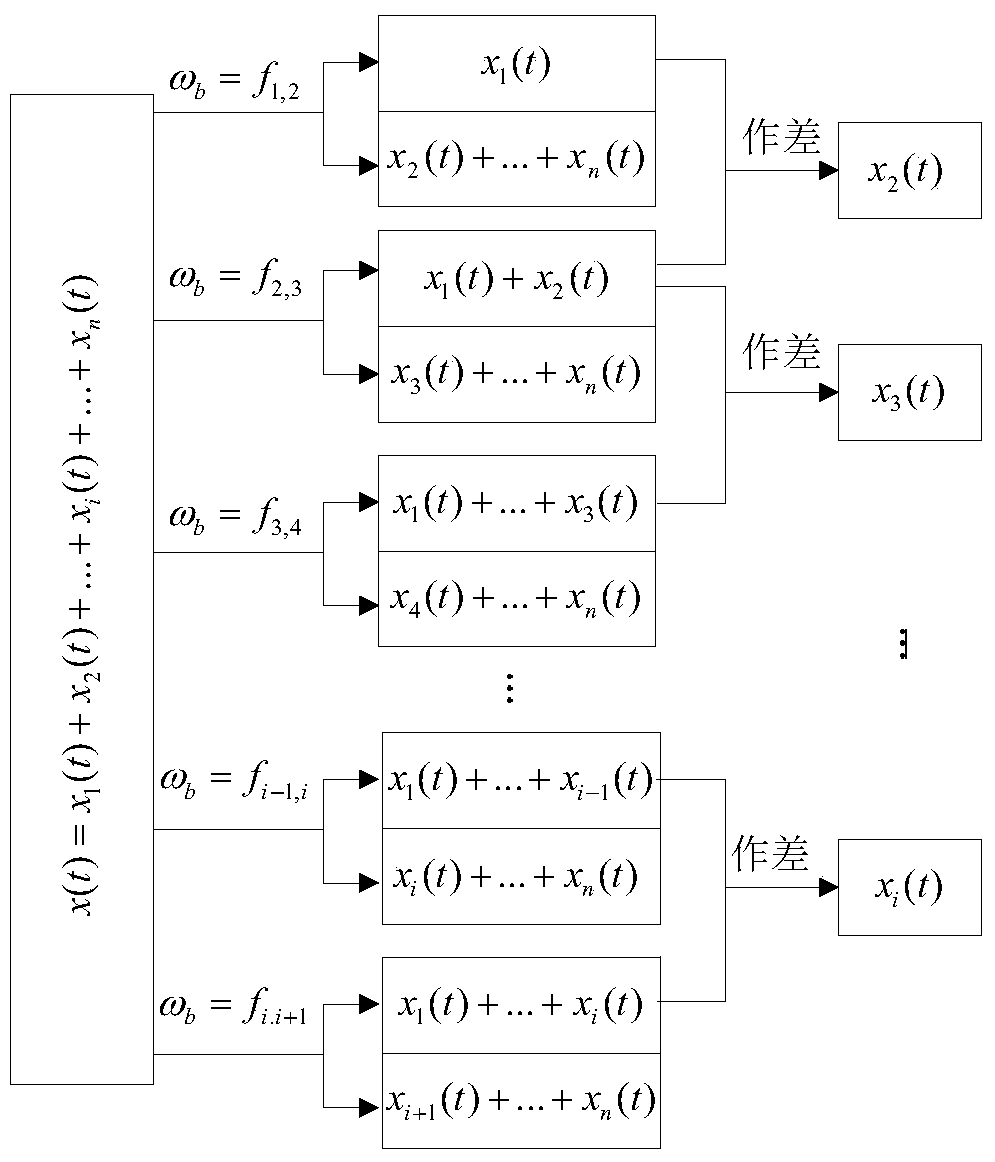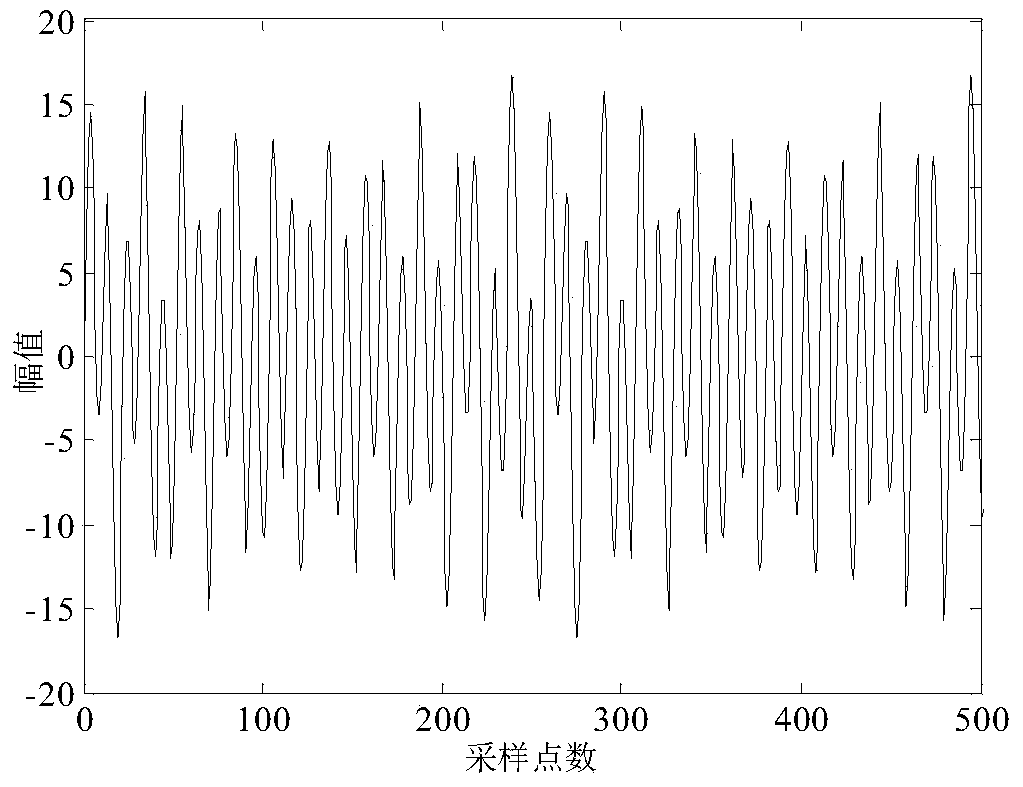A detection method of closely spaced frequency components in non-stationary signals
A non-stationary signal, interval frequency technology, applied in the field of signal processing, can solve the problem of the difficulty of detecting closely spaced frequency components of non-stationary signals, and the inability to identify closely spaced frequency components, etc., to achieve high accuracy, improve accuracy, and ensure correct decomposition. Effect
- Summary
- Abstract
- Description
- Claims
- Application Information
AI Technical Summary
Problems solved by technology
Method used
Image
Examples
Embodiment 1
[0082] For the simulation signal x(t)=5sin(40πt)+2sin(44πt)+10sin(100πt), the time-domain waveform diagram is as follows image 3 Shown.
[0083] After HHT processing the signal, its marginal spectrum is as Figure 7 As shown, two frequency values can be obtained, 42π and 100π respectively.
[0084] The signals of 42π and 100π frequency components are respectively decomposed by AMD, and the decomposed time-domain waveform diagrams are respectively Picture 8 with Picture 10 As shown, the decomposed spectrograms are Picture 9 with Picture 11 Shown. It can be seen from the simulation diagram that the signal with a frequency component of 42π has frequency aliasing, and the signal with a frequency component of 100π has no frequency aliasing.
[0085] The values of the two cross-correlation coefficients obtained by frequency search for the signal with the frequency component of 42π are shown in Table 1, where a 1 Represents the correlation coefficient between the front part of the ...
PUM
 Login to View More
Login to View More Abstract
Description
Claims
Application Information
 Login to View More
Login to View More - R&D
- Intellectual Property
- Life Sciences
- Materials
- Tech Scout
- Unparalleled Data Quality
- Higher Quality Content
- 60% Fewer Hallucinations
Browse by: Latest US Patents, China's latest patents, Technical Efficacy Thesaurus, Application Domain, Technology Topic, Popular Technical Reports.
© 2025 PatSnap. All rights reserved.Legal|Privacy policy|Modern Slavery Act Transparency Statement|Sitemap|About US| Contact US: help@patsnap.com



